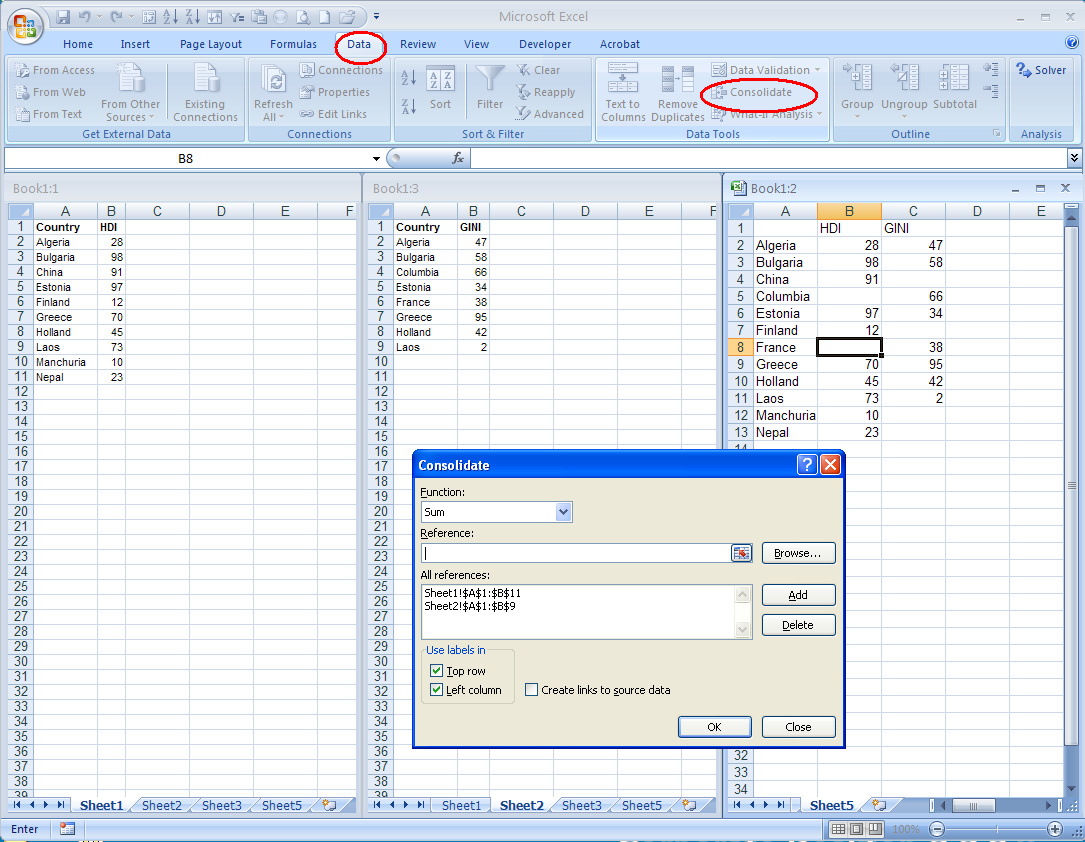5 Easy Ways to Merge Read-Only Excel Sheets

Managing large datasets in Excel can be a formidable task, especially when dealing with read-only files. These types of files, often coming from external sources or being protected to prevent accidental changes, can pose unique challenges for data analysts and researchers who need to combine them into a single, coherent dataset. Here, we will explore five effective methods to merge read-only Excel sheets, ensuring that you can handle such data manipulation with ease and accuracy.
1. Using Excel’s Power Query

Power Query is a powerful data transformation and preparation tool built into Excel. Here’s how you can use it to merge read-only sheets:
- Import Data: Open Excel, go to the Data tab, and select Get Data > From File > From Workbook. Import all the read-only Excel files you need to merge.
- Combine Queries: In Power Query Editor, select all the imported tables (queries) on the left panel. Use Append Queries to combine them. You can choose whether to append them horizontally or vertically based on your data structure.
- Modify Data: If the data needs cleaning or transformation, apply these changes in Power Query before loading the data into Excel.
- Load into Excel: Once satisfied with the merged data, click Close & Load to load the merged data into a new Excel worksheet.
🔍 Note: Power Query keeps a connection to the source files, which means any changes in the source will reflect in your merged dataset upon refresh.
2. Using Excel VBA Macros

If you’re comfortable with coding or looking for automation, VBA (Visual Basic for Applications) macros can be exceptionally useful:
- Create a Macro: Press Alt + F11 to open the VBA editor, then insert a new module.
- Code the Merge: Write a script to open the read-only files, copy their data, and paste it into a new workbook or sheet in your current workbook. Here’s a sample VBA snippet:
Sub MergeReadOnlyExcelFiles() Dim Filename As String Filename = Dir(“C:\path\to\read-only\files*.xlsx”)Do While Filename <> "" Workbooks.Open Filename:=Filename, ReadOnly:=True With Workbooks(Filename).Worksheets(1) .Range("A1").CurrentRegion.Copy Destination:=ThisWorkbook.Worksheets(1).Range("A" & Rows.Count).End(xlUp).Offset(1) End With Workbooks(Filename).Close False Filename = Dir Loop
End Sub
- Run the Macro: You can then run this macro by pressing Alt + F8, selecting your macro, and clicking Run.
💡 Note: Ensure your Excel version supports VBA and that macros are enabled to run this method.
3. Utilizing External Tools Like Able2Extract

Software solutions like Able2Extract or similar data extraction tools can help merge read-only Excel sheets:
- Install Software: Download and install tools like Able2Extract or another data extraction software.
- Import Files: Use the software to import all your read-only Excel files.
- Merge Data: Look for options like “Combine Files” or “Merge Workbooks” within the software, which will allow you to combine multiple files into one.
- Export: After merging, export the combined dataset back into an Excel workbook.
4. Using Python with Pandas Library

Python’s Pandas library provides an excellent framework for working with Excel files programmatically:
- Install Python and Pandas: Ensure Python and Pandas are installed on your system.
- Script for Merging: Write a Python script using Pandas to load, merge, and export Excel data:
import pandas as pd from pathlib import Pathfolder_path = Path(“C:/path/to/your/folder/”)
all_data = pd.DataFrame()
for file in folder_path.glob(“*.xlsx”): df = pd.read_excel(file, sheet_name=0) # Change sheet_name if necessary all_data = pd.concat([all_data, df], ignore_index=True)
all_data.to_excel(‘merged_file.xlsx’, index=False)
- Run Script: Execute the script to generate a merged Excel file from your read-only sheets.
🐍 Note: Python scripts can also be run through automation tools like Windows Task Scheduler for repeated tasks.
5. Manual Merging Through Copy and Paste

For smaller datasets or a quick and straightforward approach:
- Open Files: Open each read-only Excel file in a separate instance of Excel.
- Copy Data: Select the data range, right-click, and choose Copy.
- Create New Workbook: Open a new workbook and paste the data into sheets or into one consolidated sheet.
- Repeat: Repeat the process for all your files, aligning and organizing the data as needed.
👀 Note: This method is more time-consuming and error-prone for large datasets.
Merging read-only Excel sheets can be streamlined with the right tools and techniques. Whether you opt for the power of Power Query, the automation of VBA, the efficiency of external software, the versatility of Python, or a manual process, each method offers unique advantages. The choice largely depends on your familiarity with the tools, the size and complexity of your datasets, and the level of automation you require. Understanding these methods allows you to handle read-only data more effectively, ensuring your analyses remain both accurate and efficient.
Can I modify read-only Excel sheets directly?

+
No, read-only Excel sheets are locked for editing to prevent any changes. You’ll need to merge or copy the data into another workbook where you can edit it.
Is it possible to automate the merging process?

+
Yes, using VBA macros or Python scripts, you can automate the merging of multiple Excel sheets to save time and reduce manual errors.
What if the data in the read-only sheets changes after merging?

+
If the data changes, you’ll need to re-merge or update your merged dataset. Tools like Power Query will automatically refresh if you re-open the file or use the “Refresh” feature.
Can I merge files from different Excel versions?

+
Yes, as long as the file format is compatible (.xlsx, .xls), you can merge files from different versions of Excel, though features might differ.
How do I handle formatting when merging data?

+
Formatting can be preserved during merging by using Power Query or by carefully pasting data in Excel. Advanced software might also offer options to retain formatting.



